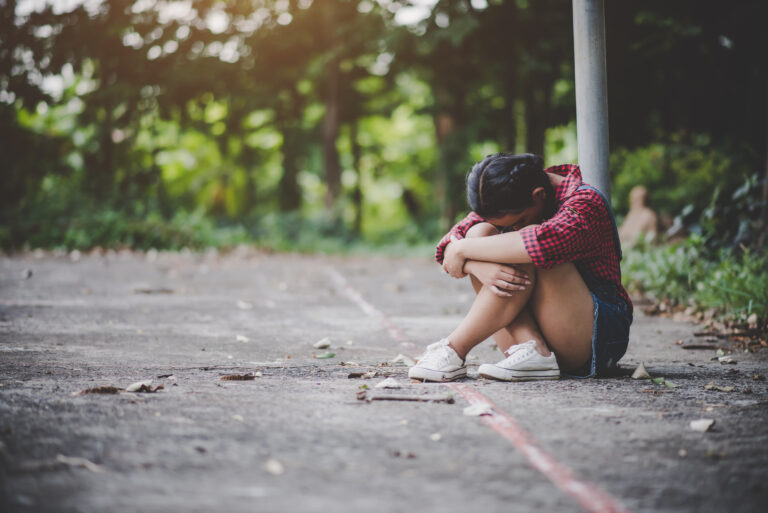Child sexual abuse is a dark reality that often lurks in the shadows, harming the most vulnerable among us. It’s a topic that may be uncomfortable to discuss but is crucial for raising awareness and protecting our children. From physical acts to emotional manipulation, understanding the different types of child sexual abuse is essential in combatting this heinous crime. Let’s delve into definitions, signs, prevention strategies, and resources together in this important blog post on child sexual abuse.
Definitions of child sexual abuse
Child sexual abuse encompasses a range of behaviors that exploit children for the perpetrator’s gratification. It includes any form of sexual contact or interaction with a minor, whether physical or non-physical. This can involve touching, penetration, exposure to pornography, or engaging in sexual activities with a child. The key element is the violation of trust and boundaries inherent in all forms of child sexual abuse. Perpetrators often groom their victims through manipulation and coercion, creating confusion and fear in the child. Emotional abuse may accompany the physical acts, causing long-lasting psychological harm. Understanding these definitions is essential for recognizing and addressing instances of child sexual abuse effectively. By shedding light on this dark reality and educating ourselves, we empower our communities to protect our children from such atrocities.
Introduction to Child Sexual Abuse
Child sexual abuse is a devastating reality that affects millions of children worldwide. It involves any form of sexual activity with a child, whether physical or non-physical, by an adult or older individual. This type of abuse can have lifelong consequences on the victim’s mental, emotional, and physical well-being. Children who experience sexual abuse often suffer in silence due to fear, confusion, and manipulation by the abuser. The trauma inflicted can impact their relationships, self-esteem, and sense of safety. It is crucial to understand that child sexual abuse knows no boundaries – it occurs in all communities regardless of race, religion or socio-economic status. The profound impact of child sexual abuse highlights the importance of prevention efforts and support for survivors. By raising awareness, educating communities, and providing resources for victims and their families, we can work towards creating a safer environment for all children to thrive without fear or harm.
Different Types of Child Sexual Abuse
Child sexual abuse comes in various forms, each one equally damaging to a child’s well-being. Physical abuse involves any non-consensual physical contact with a child for the abuser’s gratification. This can include inappropriate touching or forced sexual acts. Emotional or psychological abuse targets a child’s mental and emotional state, often using manipulation and coercion to maintain control over the victim. Grooming is when an abuser builds trust with a child and their family to exploit them sexually later on. Exploitation refers to situations where children are coerced into creating or sharing explicit images or videos, often through blackmail or threats. These different types of child sexual abuse can have long-lasting effects on a survivor’s mental health and well-being if not addressed promptly and effectively.
Physical Abuse
Physical abuse is a form of child sexual abuse that involves any non-consensual physical contact for the gratification of the abuser. This can include touching, fondling, or penetration of a child’s body in a sexual manner. The effects of physical abuse on children can be devastating, leading to long-term emotional and psychological trauma. It can cause feelings of shame, guilt, and confusion in the victim. Perpetrators of physical abuse may use threats or intimidation to keep the child silent about the abuse. They often manipulate the child into believing that the abusive behavior is normal or even loving. It is crucial to recognize the signs of physical abuse in children, such as unexplained bruises or injuries, changes in behavior or mood, and fearfulness around certain individuals. Reporting suspicions of physical abuse is essential to protect vulnerable children from further harm.
Emotional/Psychological Abuse
Emotional and psychological abuse is a form of child sexual abuse that can have serious long-term effects on a child’s mental health. It involves manipulation, threats, and intimidation to control the victim. Perpetrators may use emotional tactics to groom and exploit children for their own gratification. This type of abuse can be difficult to detect as there are no physical signs, making it crucial for adults to pay attention to changes in a child’s behavior or emotions. Children who experience emotional or psychological abuse may exhibit symptoms like anxiety, depression, or low self-esteem. The impact of this abuse can last well into adulthood, affecting relationships and daily functioning. It is important for survivors to seek support from trained professionals who can help them heal from the trauma they have experienced. Preventing emotional and psychological abuse requires educating both children and adults about healthy boundaries, communication skills, and recognizing manipulative behaviors. By creating safe environments where children feel empowered to speak up about any form of mistreatment, we can work towards preventing this destructive cycle from continuing.
Grooming
Grooming is a sinister tactic used by abusers to manipulate and establish trust with a child. It involves building a relationship with the victim and their caregivers to gain access and control over the child. Abusers often use grooming as a gradual process, starting with seemingly innocent actions like giving gifts or showing excessive attention. Over time, they may escalate to inappropriate behavior such as crossing physical boundaries or exposing the child to sexual content. Through grooming, abusers aim to desensitize children to inappropriate conduct, making them less likely to report abuse. They may also instill feelings of guilt or fear in the child, further isolating them from seeking help. It’s crucial for parents and caregivers to be vigilant for signs of grooming behavior, such as secrecy between an adult and a child or sudden changes in behavior. By recognizing these red flags early on, we can protect our children from falling victim to this insidious form of abuse.
Exploitation
Exploitation is a sinister form of child sexual abuse that involves manipulating or coercing a child into engaging in sexual activities for the perpetrator’s benefit. It often entails taking advantage of a child’s vulnerabilities, trust, or lack of understanding. Perpetrators may use various tactics to exploit children, such as offering gifts, attention, or threats to keep them silent. Exploitation can occur both in person and online through grooming techniques like sextortion or sharing explicit images. Children who are exploited may suffer from feelings of shame, guilt, and confusion. They may also experience trauma that can have long-lasting effects on their mental health and overall well-being. It is crucial to educate children about boundaries and healthy relationships to empower them against potential exploitation. Additionally, adults must be vigilant in recognizing signs of exploitation and providing support to victims when needed.
Signs and Symptoms of Child Sexual Abuse
Recognizing the signs and symptoms of child sexual abuse is crucial in protecting children from harm. In many cases, victims may not disclose their experiences immediately, making it essential for adults to be vigilant. Unexplained physical injuries or pain in sensitive areas can be a red flag. Changes in behavior such as sudden aggressiveness or withdrawal could indicate underlying trauma. Nightmares, bedwetting, or other sleep disturbances might also point towards possible abuse. Sexual knowledge beyond what is age-appropriate or inappropriate sexual behavior can be alarming. Fear of being alone with certain individuals or reluctance to participate in activities they once enjoyed are warning signs that should not be ignored. It’s important for caregivers and educators to stay informed and attentive to any potential indicators that a child may be experiencing sexual abuse. Early intervention is key in providing support and protection to those who need it most.
Long-term Effects of Child Sexual Abuse
The long-term effects of child sexual abuse can have profoundly damaging impacts on survivors. Many individuals who have experienced this trauma may struggle with trust issues, intimacy problems, and difficulties forming healthy relationships. The psychological scars left by such abuse can manifest in various ways, including depression, anxiety, and post-traumatic stress disorder. Survivors of child sexual abuse may also battle low self-esteem and feelings of shame or guilt that were imposed upon them by their abuser. These deep-seated emotions can persist well into adulthood and affect every aspect of their lives. Additionally, the physical consequences of the abuse can lead to chronic health conditions and substance abuse as a coping mechanism. It is important for survivors to seek professional help and support to address these long-term effects effectively. Therapy, counseling, and support groups can provide a safe space for healing and recovery from the lasting trauma inflicted by child sexual abuse.
How to Prevent and Address Child Sexual Abuse
Preventing and addressing child sexual abuse is crucial for the safety and well-being of children. Education is key – teaching children about boundaries, consent, and safe adults empowers them to speak up if something doesn’t feel right. Encouraging open communication at home creates a supportive environment where children feel comfortable discussing any concerns or experiences. Community involvement plays a significant role in prevention efforts. Creating safe spaces for children to report abuse without fear of retaliation is essential. Implementing policies and procedures that prioritize child protection in schools, organizations, and recreational settings can help reduce the risk of abuse occurring. Supporting survivors through counseling services, hotlines, and advocacy groups is vital for their healing process. Providing resources for caregivers on how to recognize signs of abuse and respond appropriately can make a difference in early intervention. By working together as a society to prioritize the safety of our children, we can create a future where child sexual abuse is no longer tolerated or ignored.
Resources for Survivors and Supportive Adults
For survivors of child sexual abuse, finding support and resources is crucial for their healing journey. There are various organizations and hotlines available to support survivors in need of help. These resources offer counseling services, legal support, and guidance on navigating the emotional aftermath of abuse. Supportive adults play a significant role in helping survivors feel heard and believed. They can provide a safe space for survivors to speak freely about their experiences and offer comfort and validation. By being empathetic listeners, supportive adults can empower survivors to seek the help they need to heal from the trauma they have endured. It’s important for both survivors and supportive adults to educate themselves on the impact of child sexual abuse and understand the available resources that can aid in recovery. Together, through awareness and advocacy efforts, we can create a more compassionate society that prioritizes the well-being of those affected by such heinous acts.
Conclusion
Child sexual abuse is a heartbreaking reality that affects far too many children around the world. It comes in various forms, including physical abuse, emotional manipulation, grooming, and exploitation. Recognizing the signs and symptoms of child sexual abuse is crucial for early intervention and support. The long-term effects of child sexual abuse can be devastating, impacting survivors well into adulthood. However, with proper prevention measures and timely interventions, we can work towards creating a safer environment for all children. It’s essential to educate ourselves on the different types of child sexual abuse and how to address them effectively. By raising awareness, offering support to survivors, and advocating for change in policies and practices, we can help prevent future cases of child sexual abuse. Remember that resources are available for both survivors and supportive adults who may need guidance or assistance. Together, we can make a difference in combating child sexual abuse and ensuring the safety and well-being of all children.




